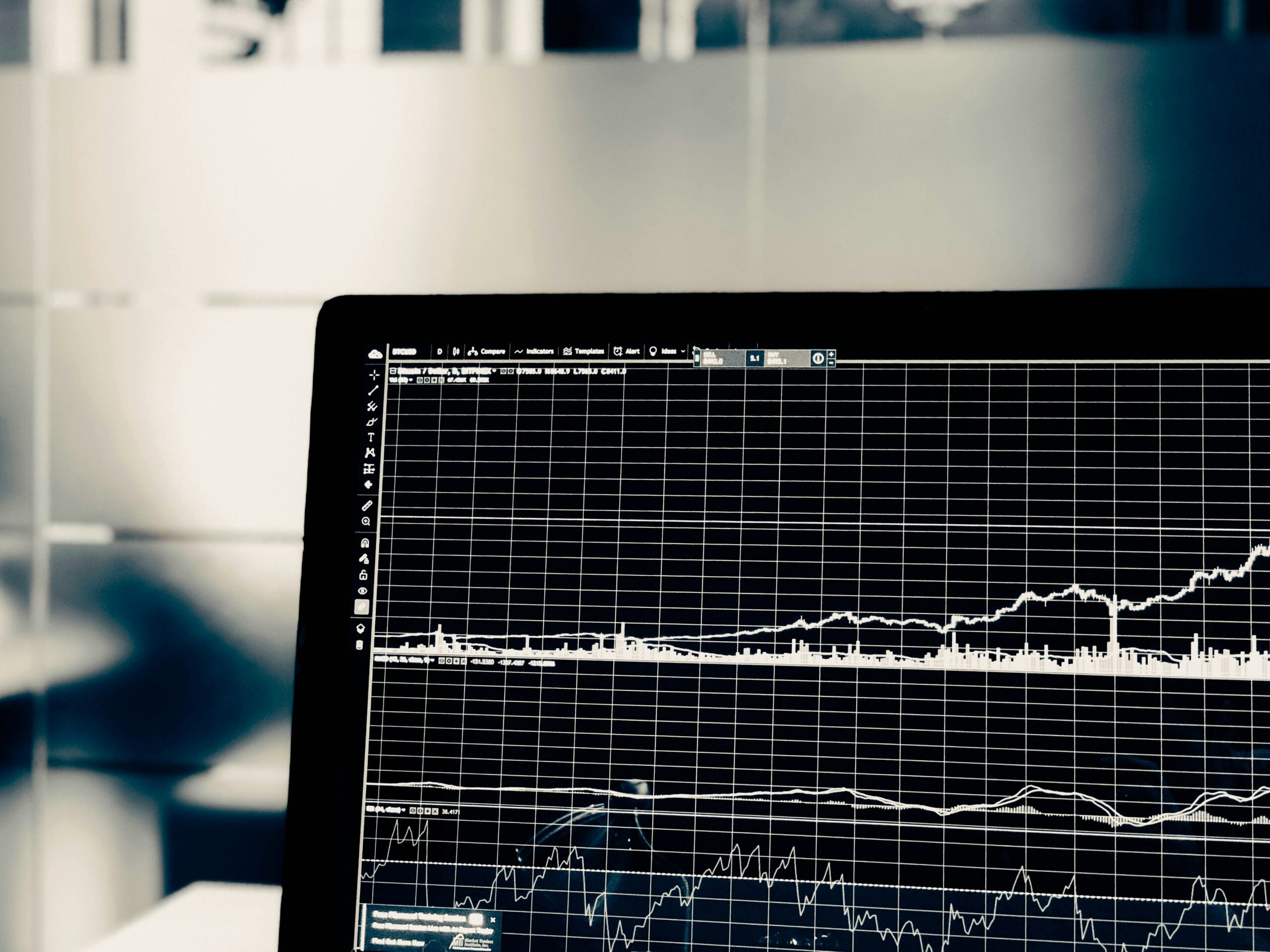
Introduction to IoT in Agriculture
The concept of the Internet of Things (IoT) represents a significant technological evolution that integrates physical devices with the internet, permitting them to collect and share data. In the realm of agriculture, IoT plays a crucial role in transforming traditional farming methods into more efficient, data-driven operations. By connecting various devices and systems, the Internet of Things facilitates enhanced data collection, monitoring, and automation, which ultimately leads to improved agricultural productivity.
One of the primary advantages of employing IoT technology in agriculture is its ability to provide real-time insights into various farming processes. Farmers can utilize sensors and connected devices to monitor soil moisture, crop health, weather conditions, and pest activity. This data-driven intelligence allows for informed decision-making, enabling farmers to implement timely interventions that enhance crop yields and resource management. Moreover, IoT applications can automate irrigation systems, reducing water wastage and ensuring optimal crop hydration.
The importance of the Internet of Things in addressing modern agricultural challenges cannot be overstated. As the global population continues to grow, the demand for food is expected to rise significantly. In this context, IoT offers innovative solutions for increasing agricultural efficiency, which is essential for producing more food with limited resources. Furthermore, IoT technology aids in sustainable farming practices by optimizing input usage, such as fertilizers and pesticides, thereby minimizing environmental impact.
In summary, the integration of the Internet of Things in agriculture is revolutionizing the industry. Its capacity to connect devices, streamline operations, and enhance data collection presents an opportunity for farmers to meet the pressing challenges of modern agriculture, paving the way for a more efficient and sustainable future.
Enhancing Crop Monitoring and Management
The integration of the internet of things (IoT) in agriculture has revolutionized the methods by which farmers monitor and manage their crops. A key component of this transformation is the use of IoT devices, which include sensors and drones, to facilitate real-time monitoring of agricultural environments. These technologies allow for the collection of crucial data, enabling farmers to make informed decisions that significantly enhance productivity and sustainability.
One of the primary applications of IoT in crop monitoring involves soil moisture sensors. These devices are strategically placed in the field to provide accurate and timely information on moisture levels. With this data, farmers can efficiently manage irrigation practices, applying water only when necessary, thereby conserving resources and promoting healthier crop growth. This precision irrigation not only saves water but also improves crop yields and reduces operational costs.
Weather data collection is another critical application of IoT devices in agriculture. By utilizing IoT-enabled weather stations, farmers gain access to real-time weather conditions, such as temperature, humidity, and precipitation levels. This data aids in predicting weather patterns, which is essential for planning planting and harvesting schedules. For example, farmers can anticipate adverse weather conditions and take proactive measures to protect their crops, potentially minimizing loss and maximizing yield.
Moreover, IoT technologies facilitate pest detection through the deployment of drones equipped with specialized sensors. These drones can survey large areas quickly, identifying pest infestations or crop diseases at an early stage. By swiftly addressing these issues, farmers can implement targeted treatments rather than widespread pesticide applications, promoting environmental sustainability and reducing chemical usage.
Case studies reinforce the effectiveness of IoT in agriculture. In certain regions, farmers employing these technologies have reported substantial increases in crop productivity and efficiency. Through the intelligent application of the internet of things (IoT), the agricultural sector can enhance monitoring and management practices, leading to improved outcomes both economically and environmentally.
Precision Agriculture and IoT Solutions
Precision agriculture represents a transformative approach to farming that leverages technology to enhance productivity and sustainability. Central to this paradigm is the Internet of Things (IoT), which plays a significant role in enabling farmers to monitor and manage field variability in their crops effectively. By utilizing a network of connected devices, IoT facilitates real-time data collection and analysis, empowering farmers to make informed decisions tailored to the unique conditions of their fields.
One of the key technologies in precision agriculture is GPS-guided equipment, which allows for precise field mapping and navigation. This technology minimizes overlap and reduces waste by automating tasks such as planting, fertilizing, and harvesting. Farmers can optimize their operations, ensuring that every seed and every drop of fertilizer is applied in the most effective manner possible. As a result, resource efficiency is significantly enhanced, leading to reduced costs and increased crop yields.
Automated irrigation systems represent another critical application of IoT in agriculture. These systems utilize sensors to monitor soil moisture levels and weather conditions, allowing for precise water application. By ensuring that crops receive an adequate amount of water without over-irrigation, farmers can conserve water resources while promoting healthier plant growth. Furthermore, these smart systems can adapt to changing environmental conditions, providing an adaptable technique for managing irrigation demands effectively.
Nutrient management is also significantly improved through IoT-enabled technologies. Sensors can analyze soil health and nutrient levels, enabling farmers to apply fertilizers more strategically based on the specific needs of different areas within a field. This targeted approach not only minimizes chemical usage but also promotes healthier crop development and reduces environmental impact.
In conclusion, the integration of IoT into precision agriculture serves as a critical catalyst for improving agricultural efficiency. It empowers farmers to utilize resources more judiciously, ensures optimal crop growth, and enhances overall productivity in farming practices.
Water Management Innovations Through IoT
The integration of the Internet of Things (IoT) in agriculture has significantly transformed water management practices, leading to enhanced efficiency and sustainability. Smart irrigation systems are at the forefront of this innovation, utilizing an array of sensors and data analytics to optimize water usage. These systems employ soil moisture sensors that accurately measure the moisture content in the soil, allowing farmers to assess when irrigation is truly necessary. By combining this information with local weather forecasts, these systems can adjust watering schedules proactively, ensuring that crops receive the optimal amount of water without unnecessary waste.
The impact of IoT-enabled water management is profound. One of the most significant benefits is the reduction of water waste. Traditional irrigation methods often result in overwatering, which can lead to runoff and increased evaporation losses. In contrast, smart irrigation systems promote more precise water application, which not only conserves this vital resource but also contributes to lowering overall costs for farmers. By utilizing IoT technology, agricultural producers can save significantly on water-related expenses, making their operations more economically viable.
Moreover, improved plant health is another crucial advantage brought about by the IoT-driven irrigation technology. Consistent moisture levels are essential for optimal crop growth, and smart irrigation systems ensure that plants receive the right amount of water at the right time. This careful calibration of water supply enhances the resilience of crops against drought and waterlogged conditions, ultimately leading to better yields.
Numerous agricultural projects worldwide exemplify the successful implementation of these smart irrigation solutions. For instance, farms in California have adopted IoT technologies to manage irrigation based on real-time soil moisture readings, resulting in up to 30% water savings. As the Internet of Things continues to evolve, its ability to revolutionize agricultural practices, particularly in water management, will undoubtedly shape the future of sustainable farming.
Livestock Monitoring and Health Management
In the context of modern agriculture, the internet of things (IoT) plays a pivotal role in enhancing livestock monitoring and health management. With the increasing need for efficiency and sustainability in farming, numerous IoT applications have emerged to address these challenges effectively. By integrating technology into livestock farming practices, farmers can monitor animal health and behavior with unprecedented precision, leading to improved productivity and welfare.
One of the most significant advancements in this arena is the utilization of wearable devices for livestock. These devices are designed to track various health metrics, including heart rate, temperature, and movement patterns. By collecting real-time data, farmers can promptly identify any signs of illness or distress, enabling timely interventions that can prevent the escalation of health issues. This proactive approach not only enhances animal welfare but also results in economic benefits by reducing veterinary costs and minimizing herd losses.
Additionally, GPS tracking systems have revolutionized how farmers manage their livestock. These technologies allow for the monitoring of grazing patterns and activity levels, providing insights into the animals’ behavior and environmental interactions. Such data are invaluable for optimizing pasture utilization and ensuring that livestock are not overgrazing, which can lead to land degradation. Furthermore, automated feeding systems that incorporate IoT solutions ensure that animals receive the appropriate amount of feed at scheduled intervals, reducing waste and promoting efficient feeding practices.
With the capacity to capture and analyze real-time health data, IoT applications significantly contribute to better decision-making in livestock management. The ability to swiftly assess the health status of animals leads to enhanced overall productivity and a more effective resource allocation. Thus, the role of the internet of things in livestock monitoring is transformative, ensuring that farmers can maintain healthier herds while maximizing operational efficiency.
Supply Chain Optimization with IoT
The Internet of Things (IoT) has revolutionized the agricultural sector by providing innovative solutions for supply chain optimization. This technology enables farmers, distributors, and retailers to connect seamlessly, enhancing transparency and efficiency throughout the agricultural supply chain. By utilizing IoT devices, stakeholders can track the quality and status of produce from the farm to the market, ensuring fresh and high-quality food reaches consumers.
One of the core functionalities of IoT in agriculture is its ability to monitor produce conditions in real-time. Sensors deployed in fields and storage facilities can collect data on temperature, humidity, and other environmental factors. This information allows farmers and supply chain managers to make informed decisions regarding harvest times and storage conditions. By ensuring optimal conditions, the risk of spoilage is minimized, which directly contributes to reducing waste and improving overall productivity.
Moreover, IoT systems facilitate inventory management by employing smart tracking solutions. With RFID tags, barcodes, and GPS technology, stakeholders can have accurate visibility of stock levels at every point in the supply chain. This level of transparency helps to manage inventory more effectively, ensuring that demand aligns with supply and minimizing overproduction. Additionally, logistic operations are streamlined through real-time data sharing, enabling timely responses to fluctuations in demand or delays in transport.
However, despite the numerous advantages offered by IoT solutions in agricultural supply chain management, there are challenges that need to be addressed. These include concerns related to data privacy, cybersecurity, and the initial costs of implementing such technology. Addressing these challenges requires collaboration among all stakeholders and investment in robust infrastructure and security measures. Overall, leveraging the Internet of Things can significantly enhance the efficiency and transparency of agricultural supply chains, leading to better outcomes for farmers and consumers alike.
Cost Reduction and Sustainability Benefits
The integration of the internet of things (IoT) into agriculture has significantly transformed economic models, presenting both cost reduction and sustainability benefits. Farmers now have access to smart devices and sensors that facilitate real-time data collection and analysis. These technologies enable precise monitoring of soil conditions, weather patterns, and crop health, allowing for informed decision-making. As a result, farmers can optimize resource usage, such as water and fertilizers, leading to lower operational costs and enhanced profitability.
For instance, intelligent irrigation systems, which utilize IoT technology, deliver water efficiently based on the specific needs of plants. By using moisture sensors that detect soil conditions, farmers can minimize water waste—an essential aspect of cost savings. Furthermore, accurate data helps in predicting pest outbreaks or the onset of diseases, allowing for targeted treatment interventions that reduce the reliance on chemical pesticides. This approach not only cuts down on expenses related to chemical application but also promotes a healthier environment.
The sustainability benefits of IoT in agriculture extend beyond cost savings. By enabling precise farming techniques, the internet of things encourages a reduction in chemical inputs, thereby minimizing the risk of soil degradation and water pollution. Sensors and connected devices can monitor nutrient levels in real time, facilitating nutrient management that aligns with sustainable agricultural practices. Consequently, carbon footprints associated with transportation and the use of heavy machinery are reduced, supporting environmentally friendly farming.
Moreover, IoT applications help in tracking the carbon emissions related to agricultural operations, allowing farmers to implement better strategies for reduction. This holistic approach to enhancing agricultural efficiency not only bolsters economic stability for farmers but also paves the way towards a sustainable future, where farming practices are harmonized with environmental conservation.
Challenges and Limitations of IoT in Agriculture
The integration of the internet of things (IoT) into agricultural practices holds vast potential; however, several challenges hinder its widespread adoption. One primary concern is the high initial costs associated with implementing IoT systems. This includes expenses related to purchasing smart sensors, automated machinery, and the necessary infrastructure to support connectivity. In many cases, smallholder farmers may find these costs prohibitive, particularly in developing regions where resources are scarce.
Data privacy is another critical issue that needs to be addressed. Agricultural IoT devices often collect sensitive information about farming practices, crop yields, and even location. This data, if not adequately protected, could fall into the wrong hands, leading to potential misuse. Ensuring robust data protection measures, including encryption and secure data storage solutions, is vital to safeguarding farmers’ information.
Additionally, the effective use of IoT devices necessitates a level of technological proficiency that may not be readily available among all farmers. Many agricultural workers require training programs to familiarize themselves with the technology and maximize its potential benefits. Without proper education and skill development, the efficiency gains anticipated through the utilization of IoT can remain unrealized.
Rural areas often face infrastructure gaps, further complicating the successful implementation of the internet of things. Many locations may lack reliable internet connectivity, rendering IoT devices ineffective. Addressing these infrastructural deficiencies is crucial for ensuring that all farmers can benefit from the technological advancements that IoT offers.
To navigate these challenges, collaborative efforts between governments, private sector players, and agricultural organizations are essential. Investments in training, advancements in data security practices, and improvements to rural infrastructure can create a more conducive environment for IoT adoption in agriculture, leading to enhanced productivity and sustainability in the sector.
The Future of IoT in Agricultural Practices
The integration of the Internet of Things (IoT) into agricultural practices is poised to revolutionize the sector in the coming years. As technology continues to advance, new innovations are emerging that promise to enhance productivity and efficiency in farming. These innovations include smart sensors, autonomous equipment, and data analytics platforms, all of which can provide real-time insights and automate various farming tasks. This shift towards IoT-driven practices allows farmers to monitor crop health, soil moisture, and climate conditions more effectively, thereby optimizing resource use and yield outcomes.
Market growth for IoT in agriculture is not only promising but essential for adapting to the challenges posed by climate change and population growth. According to recent industry forecasts, the agricultural IoT market is expected to grow significantly, driven by rising demand for precision farming solutions and data-driven decision-making. As more farmers realize the potential benefits of IoT technologies—such as reduced operational costs and increased crop yields—adoption rates are likely to rise, indicating a transformative shift in agricultural practices.
For farmers to successfully adapt to these advancements, it is pivotal that they leverage training and educational resources to understand the application and benefits of IoT systems. Furthermore, collaboration with technology providers can facilitate a smoother transition into smart farming. Policymakers and researchers also play a critical role in this transformation. By investing in research initiatives focused on sustainable agricultural practices and fostering an environment conducive to innovation, the adoption of IoT technologies can be accelerated. This collective effort will help ensure that the agricultural sector is equipped not only to meet current demands but also to thrive in a rapidly evolving technological landscape.

